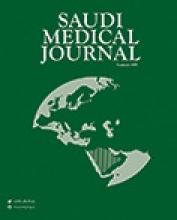Abstract
OBJECTIVE: To determine the prognostic importance of admission time, admission day, admission source, and route of admission, attached devices before admission, diagnosis of patients, and total Simplified Acute Physiology Score (SAPS) II score during admission on intensive care unit mortality rates.
METHODS: This retrospective study was carried out with 545 patients admitted to adult intensive care units between January 2006 and January 2011 at Zonguldak, Turkey. Computerised database and patient records were used for data collection. Data from the patient records was collected by a constructed survey form and SAPS II scale. The data was evaluated by numeric values and percentages, Pearson correlation analysis, logistic regression analysis, Chi-square, and student t-tests.
RESULTS: The mortality rate was 60.4%. The patients who died had a higher SAPS II score. The mortality rate was higher in admissions from the emergency department (p=0.000), admissions of patients on a stretcher (p=0.000), the existence of an intubation tube (p=0.000) and monitor (p=0.001), and in patients with respiratory tract illness (p=0.000), and infection (p=0.000). A significant difference was not found between the admission day (p=0.761), and time (p=0.063).
CONCLUSION: The SAPS II scores of the patients, the route of admission and admission source, being intubated and connected to a monitor, admission diagnosis, and length of stay in intensive care units was increased to mortality rate. However, the days and hours of admission did not significantly affect mortality.
- Copyright: © Saudi Medical Journal
This is an open-access article distributed under the terms of the Creative Commons Attribution-Noncommercial-Share Alike 3.0 Unported, which permits unrestricted use, distribution, and reproduction in any medium, provided the original work is properly cited.






